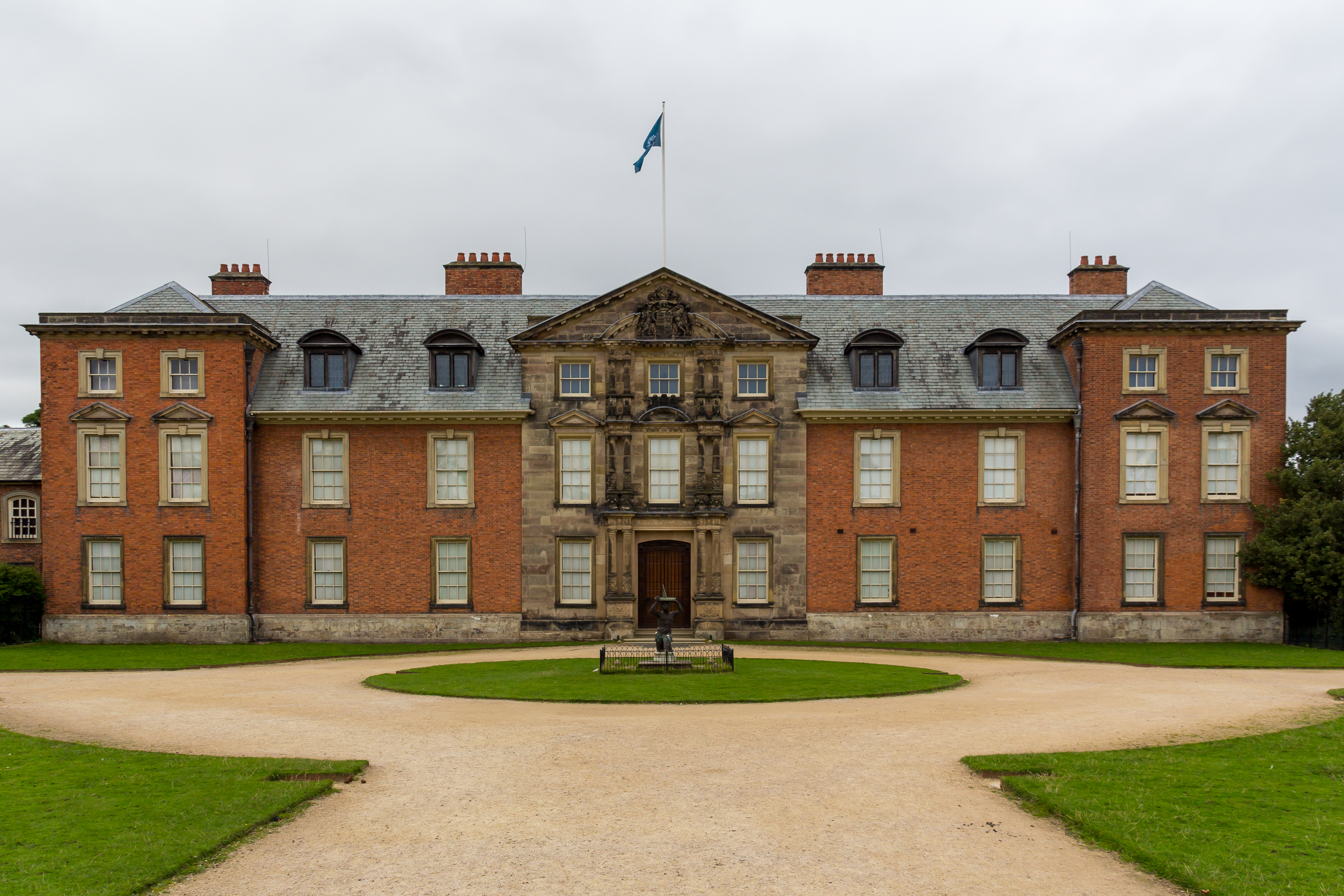Dunham Massey Hall, usually known simply as Dunham Massey, is an English country house near Altrincham in Greater Manchester, surrounded by historic formal gardens and an enclosed deer park. It was built in the early 18th century by the Earls of Warrington, passing to the Earls of Stamford by inheritance, and has been owned by the National Trust since the death of the 10th and last Earl of Stamford in 1976. Almost 300,000 people visited the hall in 2017/18.[1]
Significant alterations were made during the early 20th century, and during the First World War the hall was used as the Stamford Military Hospital. It has historic formal gardens and an enclosed deer park.
Dunham Massey was designated a Grade I listed buildingStructure of particular architectural and/or historic interest deserving of special protection. on 5 March 1959.[2] The associated Stables and Carriage House are also listed at Grade I.[3][4]
History
The first mention of a park at Dunham Massey dates to 1362, but it is known that wild deer and boar had been hunted there for many years previously. George Booth, 2nd Earl of Warrington, inherited the estate in 1694, along with debts of £50,000.[5] The present-day house, which dates mainly from 1732–1740 was designed for the Earl by John Norris, but there is an earlier service court dating to about 1721. Significant alterations were made by Compton Hall in 1905–1907, including the centrepiece of the south front. To make the house seem more 17th century in character, the 3rd, 4th, 8th and 9th bays of the south front were reduced from 3 storeys to 2 at the same time, with dormer windows above.[2]
Stamford Military Hospital
In 1917, during the First World War, Penelope Grey, Countess of Stamford, wife of the 10th Earl of Stamford, made Dunham Hall available to the Red Cross as a military hospital, known as the Stamford Military Hospital. It cared for soldiers who had suffered injuries ranging from gas poisoning to bullets in the brain. The hospital was run by Sister Catherine Bennett; Lady Stamford’s daughter, Lady Jane Grey, trained as a nurse at the hospital.[6]
Contents
Dunham Massey contains a large collection of Huguenot silver, most of it gathered by George Booth, 2nd Earl of Warrington. During his 64 years at Dunham Massey, he accumulated more than 1000 pieces of silver. One sixth of the original plate remains at Dunham Massey, but much of the rest was dispersed by the Countess of Stamford and Warrington (died 1905), widow of George Grey, Earl of Stamford and Warrington. The 10th Earl, Roger Grey, expended much money and effort in returning family heirlooms originally from Dunham Massey.[7]
The house also contains a collection of oil paintings and watercolours; the relief wood-carving of the Crucifixion by Grinling Gibbons, which hangs in the Library, is the earliest known work by the 17th-century carver. A group of paintings of the house and estate from the 1690s and 1750s have been described by Simon Jenkins as “the most remarkable topographical survey of any country house and its grounds to remain in situ. The paintings are in the Great Gallery, which also has an Allegory of Time by Guercino.[8]




